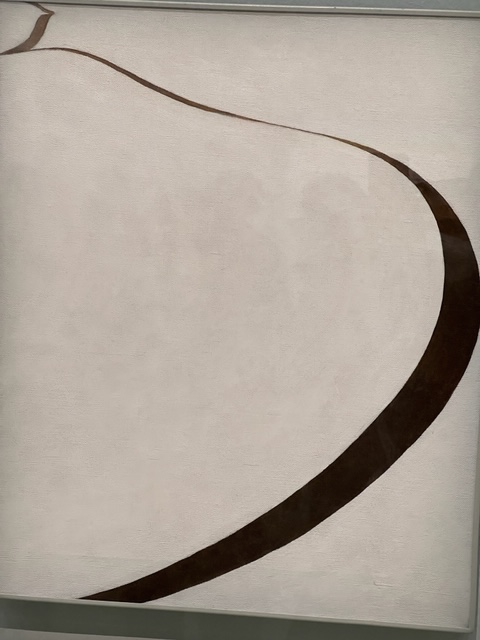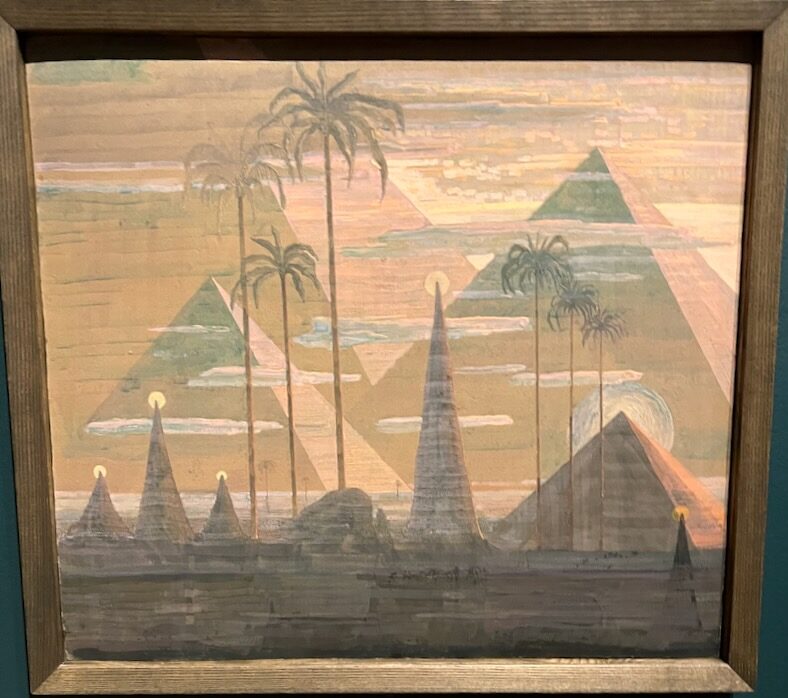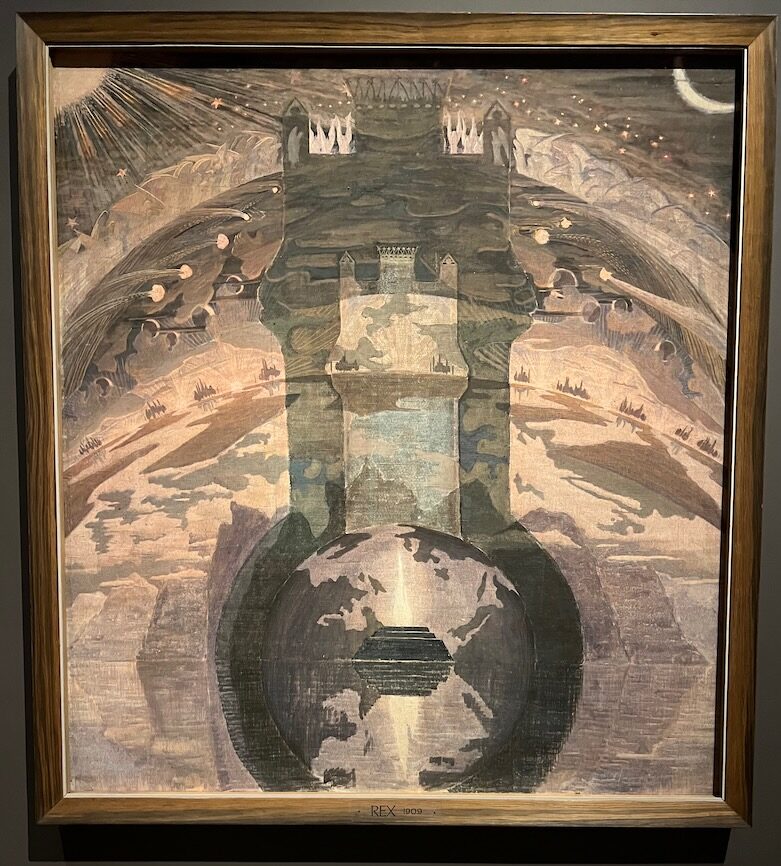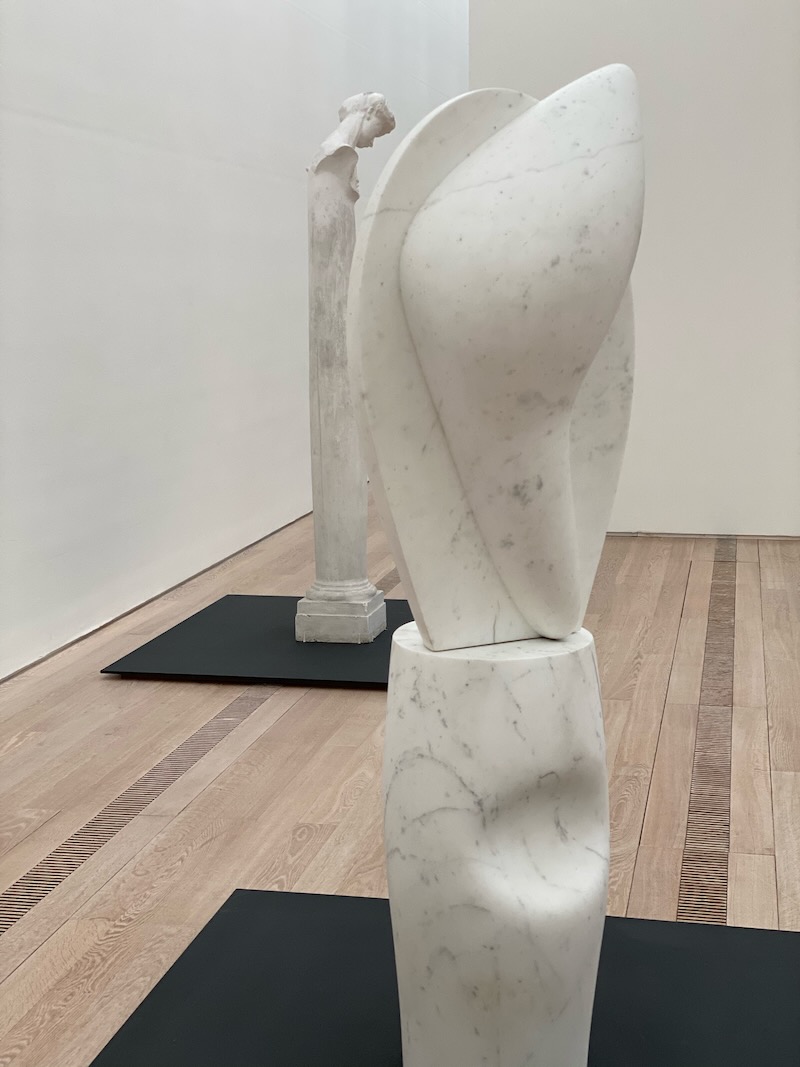Spiritual Art Liberates its Creators
One might assume that spiritual art evaporated centuries ago and if present then only in nativist, tribal artistic practice. Yet, most of what we understand to be contemporary art is rooted in the spiritualism of modernism. Looking further back into the crescent moon of the Western art, to the Ancient Greece, Epictetus wrote in one of my favourite passages in his treatise On Freedom; “This is the road that leads to liberty, the only road that delivers us from slavery: finally, to be able to say, with meaning: Lead me, Zeus, lead me, Destiny, to the goal I was long ago assigned.” While he names Zeus, the God above all other gods on the Greek Pantheon, by adding the capitalised Destiny as equal to the divine guide, he highlighted that an individual who renounces the ego besides “externals cannot be hindered, as externals are things that are not within our power either to have or to not to have – or have in the condition we might like.” I will explain how spiritual art takes exactly this path through abstraction.



Religious vs. spiritual art
I shall settle potential miscomprehension right from the start. Religious art is different from spiritual art. While one can contain the other, the spiritual can exist on its own via pure connection of the individual artist with the esoteric. The religious can also just be expressed soulless, as some icons in medieval Christian portraits bluntly did. Was it the lack of insight, knowledge, skill or disconnect from the spiritual essence that made them so, well boring for our eyes today? To me as a mindful viewer, something is lacking in such art. As if it were lifeless, and simultaneously without the timeless grasp of the eternal formless that connects me with the work’s form. On my photos above, Joan Miró, Georgia O’Keefe and Lee Ufan captured so simply what words, except perhaps for the deepest poetic nuances, cannot fully express. The Line, Winter Road and Relatum were the results of decades of artistic practice, refinement through connection with the most essential forms as well as the formless.

Describing the process of connecting with the unknown through creativity
Wassily Kandinski attempted to put the spiritual in art of his era into words. His famous essay was published over a century ago but its insights are timeless. If you want to dive deeper into the groundbreaking Russian artist’s intellectual side read that insightful piece, it is not too long. Miró forged his own journey from realism to abstract expressionism. Before he could liberate himself fully into his triptychs of minimalist perfection, his complex epic Constellations distilled his musical (Bach), spiritual (higher consciousness, poetry) and visual inspiration (nature) into symbolic language. He recited though his brush with poetic sensibility “based on reflections in water”. Not literally, but as a “link between the terrestrial and the celestial”.
Contemporary artists also are capable to describe their own process. The Austrian abstract artist Hubert Scheibl confides: “I am on an intensive quest for an evolutionary primordial current. Much later you may realise that you’ve been working on a Martian alphabet that no one understands. My work is an exploratory movement that approaches unknown energy fields and energy forms intuitively rather, a constant oscillation between over here and over there. A play between intuition and calculation begins, which remains visible as a process of painterly design. I am not concerned with the geometric, compositional elements, but rather with an expansion of the spatial imagination that places surfaces and abstract functions in a concrete context.” When Epictetus warned “If you grow attached to any externals [including the body and its members, as well as material goods] as if they were your own, you will incur the penalties prescribed for a thief.” Therefore, by not copying anything out there, but rather creating intuitively, art is what sets great artists today apart form the average weekend hobbyist. The negative, binding association with attachment is as old as the Vedic texts prescribed.
Astrology has historically impregnated art with meaning. From east to West, the symbolic depictions of zodiac signs have also attracted the creatives. A broad pictorial book dedicated to such art published by Taschen, that thematically assembles astrological art across centuries. Alphonse Mucha, known as one of the first commercial artists, embraced the zodiac playfully. Gustav Klimt was interested in mythology and liberation of human mind through art, renouncing by Austrian state then sponsored art as weak and false. The Lithuanian M.K. Ciurlionis metaphysically impressed me in a rare showing BETWEEN WORLDS recently at South London’s Dulwich Picture Gallery.



Contemporary greats also turn their attention to the zodiac. I just pondered over and wondered at a Chinese Zodiac themed exhibition by Ai Weiwei at Vito Schnabel gallery in St Moritz. He masterly used something existing, a lego, to portray something ancient, the zodiac, while it looks like contemporary pixelated image. You need to see it in front of you in its real presence.



Spiritual art cultures merge in making the invisible seen
Spiritual art of the East used to feel very different from the West, so did the vibrantly colourful art of the South in Africa. Since I already did away with the religious differences at the beginning, spiritually their potential common denominator was the cultural conditioning of one’s subconscious and unconscious, which flows often unsuspected into the oeuvre of the fully immersed creator.
Miró imbued his symbolic canvases with the darkness of the world wars and the Spanish Civil War era. Max Ernst expressed the unknown through simplified figurative miniatures of the universe. The Swiss Emma Kunz used the precision of geometry in her pendulum drawings as if she hoped that the supernatural can restore order in the world. Croatian Zoran Music as if melted landscape into the human and animal figures in the retrospective I caught at Albertina in Vienna recently. The German Anselm Kiefer turns to alchemy to express apocalyptic masterpieces transformed from their roots in Kabbala (the ancient Jewish sect) into contemporary, climate-related renderings. Further West, Georgia O’Keefe represented brilliantly that wild native desert spirit also portrayed by the tribal art of America.
Over the past century, globalisation picked up speed, so now we are increasingly communicating in basically the same visual language that will not disclose indisputably where the author is from. I think that art has become even more spiritual as it lost its cultural identity.
The Japanese mentally disturbed icon Yayoi Kusama still works in her nineties on her My Eternal Soul series that sell out in museums around the world. Perhaps the ongoing abstractions will never be finished as her title suggests. I suspect what is so appealing in her colourful works spanning seven decades is the positive aspect of her creations. The childlike innocence of her pumpkins, her naturalist compositions resembling the indigenous Australian Aboriginal maps. Her global popularity transcends cultures, genres, media, and hers were even named the most visited exhibitions of any living artist.

Extracting the invisible into the visible, that is riddling out the spiritual in art. The Paris-based Chinese master of abstraction Zao Wou Ki introduced the Western mind to tao. Also hailing from the Far East but creating in France, the Korean-Japanese Lee Ufan applies minimalist nativism common on his island countries with intertwined history. Zen art is purely spiritual, selfless.
The code to the invisible may rest engraved in the engagement of one’s spirit with whatever activity one pursues. Whether it is art, composing a song, theatrical performance, photography, drawing, sculpting or walking in the forest, swimming in the wild open water, or writing, when you feel your heart bouncing in tune with your mind and your limbs doing whatever feels natural without analysing it, that is being in the flow of the spiritually infinite, that which Einstein sensed, but took time to prove only recently through currently approved scientific methods.
Everything changes and so does science and the ways we recognise as valid in our lifetimes. Once human tele-transport works, we may shift our perception of reality once again. Anyway art is already virtual and NFTs seem to move the market.

The liberating function of art not just for the masters, but also to do yourself
That intangible aspect of spiritual art is the inner life expressed as something connecting with sensitive others. Spirit is selfless and therefore any ego leaked into the work kills the soulful that could peak out from behind the obvious materialist curtains. This is not possible for an artist too concerned with his reputation, money making and egotistic pride in the highly conceptual rather than the liberated soul work. Unattached to what the current trends dictate, that is creative and existential freedom.
Is this the inner eye of spiritual Hindu genre? On Egyptian stone paintings, papyrus scrolls and even more in sculpture “when reached the perfect proportions it was found to be animated with an angelic spirit” [Mercurius Trismegistus]. The cultures of the past we are fascinated by the most during art and history lessons are those spiritually advanced.
What all of the spiritual art traditions and forms have in common is intuition. The comforting trust in our own instinct can guide us perhaps even more trustfully than the mind. A collage lends itself naturally to intuitively assembling pieces into one thing, and it is something you can try yourself. Just take scissors, cut out objects that speak to you in magazines and other printed material, even found objects like stones and plants and glue them around on one paper. Something circular like a mandala can be a helpful guide to how you want to organise the images on the page. Looking at these later, you might be surprised what everything in it can tell about your current state of mind, your goals, desires, troubles. An expert’s eye can decipher your Self from it.


Human feelings and nature
Maybe intuition is why nature when portrayed or moulded by mindful hands lends itself so visibly to the spiritual in art. Pottery in the Far-Eastern tradition pays homage to nature. My Japanese and Korean jars and vases bring me close to the soil, their clay and glazing hued like an autumn landscape.
While the expression of the spiritual can be dark, murky, something to be feared, it is possible to include colourful jolly feasts for the senses as Kusama’s mentally disrupted mind has proved: “Everyone asks me where my inspiration comes form, but I just pick up the paint brush and follow my hand and the work just flows from me. Afterwards I give them poetic titles which are also filled with meaning for me.”
Music is originally an aural transformation of the sounds in nature, and certain frequencies can move our souls to unexpected heights if we allow the musical charm to possess us. Dancers grasp this magical connection daily in their practice.
Do not mistake the soul with emotions though. While the emotive lends itself to artistic representation, it is attached to the state of the mind, to feelings and to the surroundings in the material sense. Rodin was the master of capturing the emotional in 3D. The sculptures of Hans Arp move beyond the figurative limitation of Rodin, they transcend the flesh.



Mastery of technique can still break grounds for new art, yet when the artist is truly free, creating independently on others in the contemporary circle, then he/she has a higher chance of stumbling into the the spiritual in art. Allowing oneself to be guided not by another person, teacher, style, but by that ‘Je ne sais quoa’ is the secret of countless excellent artists. Whether one is a poet, composer, movie director or performance artist does not matter, the body is only a tool, the result is magic, surreal or abstract — call it what you want.

If you read thus far, I will reward your patience. Technology does not usually support this human quality, so congratulations for bearing with me! Bellow, I summed in one paragraph my understanding of the essence of the spiritual nuances found in and through art.
Spiritual art expresses our longing for connection with ourselves and the world. Similarly to the sacred ceremonies like Temāzcal in Mexico, cacao ceremony in Guatemala, Japanese chanoyu or dancing across African tribal communities, the human being becomes immersed in the moment of acceptance, reflection, even realisation of something primordial, essential and intuitive. At the same time one’s awareness expands. One finds themselves humble before the greater force whether it is of godlike nature or the mothering Earth herself. Spiritual art underlines our commonality, it highlights the oneness that many ancient philosophies and traditions across the world acknowledged well before we found ourselves straddled in here and now.
Since spiritual art liberates its creators, I dare to propose that intuition and our connection with the spiritual may well remain the only human islands in the ocean of AI powered world the mindlessly tech-obsessed are creating instead of focusing on safety and prosperity.


NOTE: I am not an art expert. I only study art that appeals to me. I try to penetrate deeper into the creative works that connect with me on the spiritual level. Whether through their mood, colours used, themes rather hidden than obvious, the beautiful beyond perfection. Still, I read about art more than an average museum goer. I do not just visit art galleries and installations, I try to enter them, to become part of them, to merge with what the other human being created through their own grasp of transformation. Perhaps it is the new vision of reality, that co-creative leap of seemingly separated consciousness that attract me to engage with such touching works of art.
In a recent musing, I discussed the role of art beyond the aesthetic as democratic activism more accepted than journalism today. Read further in the link if that feels important to you.













